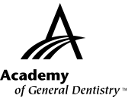|
Exercise No. 330
Subject Code: 010
Basic Science
The 15 questions for this exercise are based on the article, “In vivo dental plaque pH after consumption of dairy products”, on pages 56-59. This exercise was developed by Steven E. Holbrook, DMD, MAGD, in association with the General Dentistry Self-Instruction committee.
|
Reading the article and successfully completing the exercise will enable you to:
- identify the components of dairy products that could affect dental plaque;
- recognize the effect of pH on dental plaque microflora;
- recognize the effect of dental plaque microflora on cariogenesis; and
- understand how dairy products could be used to reduce the risk of caries.
|

